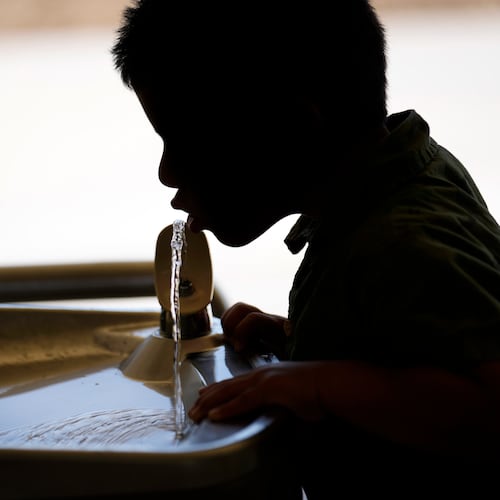Over the Thanksgiving break, a friend and I were browsing in an art gallery when we stopped in front of an oversized abstract canvas with autumnal tones. “Makes me think of home,” I told her. “Makes me think of death,” she replied. This week's unveiling of student scores on the 2018 Program for International Student Assessment, better known as PISA, provoked a similar divergence of opinion.
The performance of American 15-year-olds on the international benchmarking exam heartened some education advocates, while driving others to despair.
American Federation of Teachers President Randi Weingarten, for example, said, “Even in the face of Betsy DeVos’ and Donald Trump’s undermining of public schooling, it’s no coincidence that during an era of unprecedented teacher activism demanding more public investment, and a decline in high-stakes testing after the 2015 overhaul of federal education law, that we see an uptick in U.S. PISA results.”
But Anthony Mackay, president and CEO of the National Center on Education and the Economy, said, “We cannot be satisfied with flatlining. The time for a reset to the U.S. education system is now. The 2018 PISA results show again that U.S. high school students are failing to keep up with their counterparts in industrialized countries.”
Education Secretary DeVos repeated her standard school choice message in her PISA response, saying American students ought to have "the freedom to pursue different options and a more personalized educational experience. The bottom line is there has not been a single study that shows American education is improving enough.”
In a media call with reporters this week, Andreas Schleicher, director of education and skills at the Organization for Economic Cooperation and Development, which administers the exam, described American trend lines on PISA as "fairly steady."
American students struggled with math as they always have, he said, but they improved a bit in science. Yes, there was an achievement gap in the United States, but Schleicher said, "It is not exceptionally large compared to other countries."
(One of the countries seeing a widening gap is Finland, which has been held up as a model of equity and excellence. The performance of affluent Finnish students remains high, but the country's lowest-income kids are falling behind.)
Begun in 2000 and administered every three years to a sampling of students in participating countries and economies, PISA is a two-hour test on reading, math and science.
About 600,000 students in 79 countries took the test in 2018, representing about 32 million 15-year-olds. In the United States, 4,838 students in 215 public and private schools completed the assessment, which is scored on a scale from 0 to 1,000.
In this round of testing, PISA paid close attention to reading, finding that student skill levels in 2018 in most nations are similar to levels in 2000.
Now that we live in an age of manipulated and distorted information, PISA attempted to discern whether students could tell fact from opinion. On average across nations, only 9.9% of students could. America outpaced the rest of the countries; 13.5% of U.S. students could navigate ambiguity and resolve conflicting pieces of information.
Among the key findings about the performance of American students:
--U.S. students performed above the average in reading, scoring 505 compared to the overall international average of 487. In math, they scored 478, below the international average of 489. In science, they scored 502, above the international average of 489.
--Affluent students outperformed lower-income students. While about 27% of advantaged U.S. students were top performers in reading, only 4% of disadvantaged students were. Ten percent of disadvantaged students in the United States scored among the top quarter in reading.
--Girls outperformed boys in reading by 24 score points. Boys outperformed girls in math by 9 points. In science, boys and girls performed similarly.
--Among high-performing U.S math or science students, about three in 10 boys expect to work as an engineer or science professional at the age of 30, yet only one in 10 girls expects to do so.
--In the United States, 81% of students attained at least Level 2 proficiency in reading, surpassing the 77% average for all participating countries. Level 2 means students can identify the main idea in a text of moderate length, find information based on explicit, though sometimes complex criteria, and can reflect on the purpose and form of texts.
--About 14% of U.S. students excelled in reading, attaining a Level 5 or 6. (The average across all countries was only 9%). At these levels, students can comprehend lengthy texts, deal with concepts that are abstract or counter-intuitive, and establish distinctions between fact and opinion, based on implicit cues pertaining to the content or source of the information.
--In math, 8% of U.S. students scored at Level 5 or higher; across all countries the average was 11%. In science, 9% of U.S, students were top performers, outpacing the international average of 7%.
--Socio-economic status was a strong predictor of performance in most countries.
While the U.S. held steady, other countries saw troubling drops in their PISA scores. Among those slipping in reading were Japan, Australia, Canada France, and New Zealand.
As Mike Petrilli, president of the Thomas B. Fordham Institute, pointed out, "Most of those, plus South Korea, have lost ground in math since 2003. And in science we've actually made gains since 2006—not so flat after all!—while a bunch of countries, including the United Kingdom, Ireland, Germany, Canada, New Zealand, and Australia, have gone backwards."
About the Author
Keep Reading
The Latest
Featured


